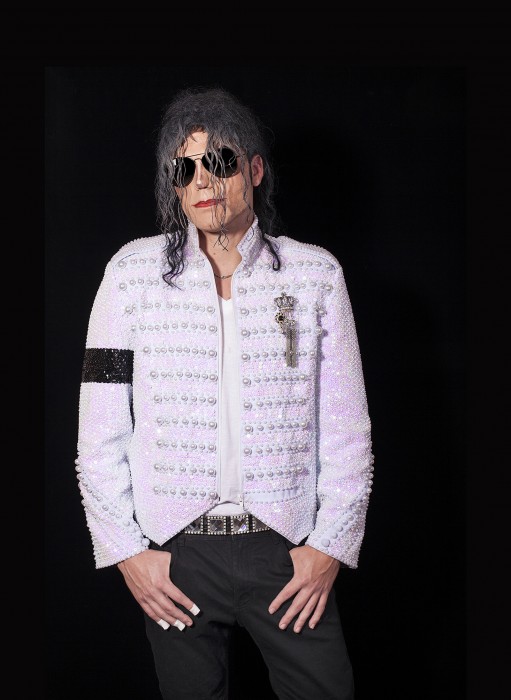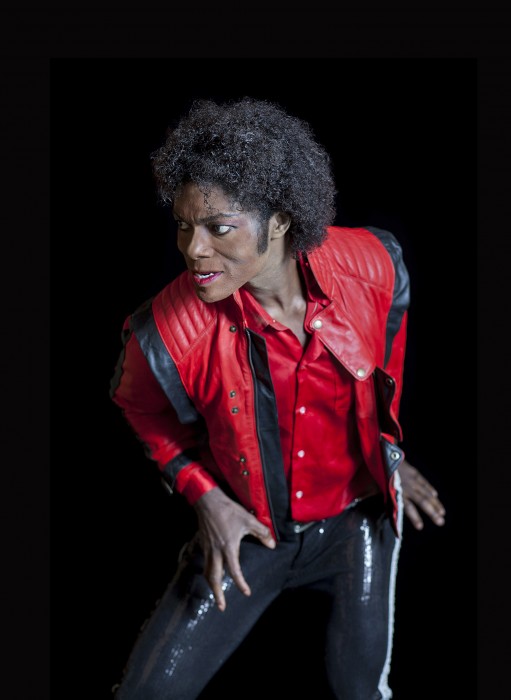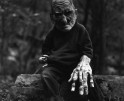Lorena Turner: The Michael Jacksons
 “For me, performers like them not only dazzled crowds with their dancing and likeness to Michael Jackson, but they also unveiled a moment in which all fixed notions of personal and cultural identity—race, gender, class—were suspended in favor of self-creation and free identity construction.” – Lorena Turner
“For me, performers like them not only dazzled crowds with their dancing and likeness to Michael Jackson, but they also unveiled a moment in which all fixed notions of personal and cultural identity—race, gender, class—were suspended in favor of self-creation and free identity construction.” – Lorena Turner
Photographer Lorena Turner began the project, The Michael Jacksons, in 2009, shortly after the death of entertainer/singer Michael Jackson. Five years later she has released a monograph of the series published by Little Moth Press, capturing those who are dedicated to his embodiment . Lorena created the project with “the objective of uniting photographic documentary production methodologies with sociological research practices”. The book was published in August to correspond with Michael Jackson’s the second posthumous compilation album Xscape (Epic Records and MJJ Music), the fifth anniversary of his passing, and his birthday. Accompanying her portraits, Lorena has written an in depth analysis of the different types of performers, and how these interpretive artists are changing the way in which world culture understands Michael Jackson.
Lorena teaches photography in the Communication Department at California State Polytechnic University in Pomona, California. Her work is shown nationally and internationally in venues as diverse as the United Nations Headquarters, the Arc Light Theater in Hollywood, and the Indianapolis Museum of Contemporary Art. She has a BA from the University of Massachusetts, an MFA from the University of Oregon, and studied sociology at the New School for Social Research. Lorena’s work has covered a diverse range of subjects including new American citizens, post-conflict communication in Rwanda, the perception of community amongst residents in a Palenque on the Pacific coast of Colombia, and the fingerprints of Chinese workers on objects made for sale in the United States. She lives in Los Angeles and New York City.
Michael Jackson died in Los Angeles on June 25, 2009. Since then his popularity as a figure of representation has soared and a kind of sub-culture has emerged that both celebrates and builds upon his artistic accomplishments. The Michael Jacksons (Little Moth Press, August 26, 2014) presents Los Angeles-based photographer Lorena Turner’s richly detailed, fascinating exploration of the lives of Michael Jackson impersonators, tribute artists, and look-alikes. After witnessing their performances at spontaneous memorials in New York City and Los Angeles shortly after Michael Jacksons’ death, Turner embarked on a five-year project (2009 – 2014) to meet, befriend and photograph the “representers” as she calls them, of pop music megastar Michael Jackson.
In the years since his death, the questions and scandals that plagued Michael Jackson have faded, and what remains is the visual and musical genius seen in his performances. The Michael Jacksons presented here honor that genius then blend their identities with Michael’s to create a new hybrid. This self-creation is what draws Turner to the Michael Jacksons. Male and female, they come from multiple age groups, genders, racial, and socio-economic backgrounds, and hail from large cities, suburbia, and small rural settings. What these Michael Jackson representers share in common is the ability to be like Michael Jackson the performer while also being themselves.
Turner began her work by seeking high profile interpreters in Los Angeles, eventually, contacting interpreters living and working around New York City, Las Vegas, Texas, Arizona, and several cities across the South. Each representer has his or her individualized life outlook and career goals, skills, costumes and makeup. Most, but not all, use makeup to approximate Michael Jackson’s thin nose, rounded eyes and sharpened jawline. They may pick one or two eras to center their acts around. Thriller from 1983 and Dangerous from 1991 are popular. All of them had a defining moment in their lives when Michael Jackson inspired them or helped them see themselves as performers. Among the striking aspects of the book are the personal narratives of some representers, along with their descriptions of how they create their “looks.”
Posts on Lenscratch may not be reproduced without the permission of the Lenscratch staff and the photographer.
Recommended
-
Yorgos Efthymiadis: The James and Audrey Foster Prize 2025 WinnerJanuary 2nd, 2026
-
Time Travelers: Photographs from the Gayle Greenhill Collection at MOMADecember 28th, 2025
-
Jamel Shabazz: Prospect Park: Photographs of a Brooklyn Oasis, 1980 to 2025December 26th, 2025
-
Martin Stranka: All My StrangersDecember 14th, 2025
-
The Family Album of Ralph Eugene Meatyard at the High MuseumDecember 10th, 2025



































































